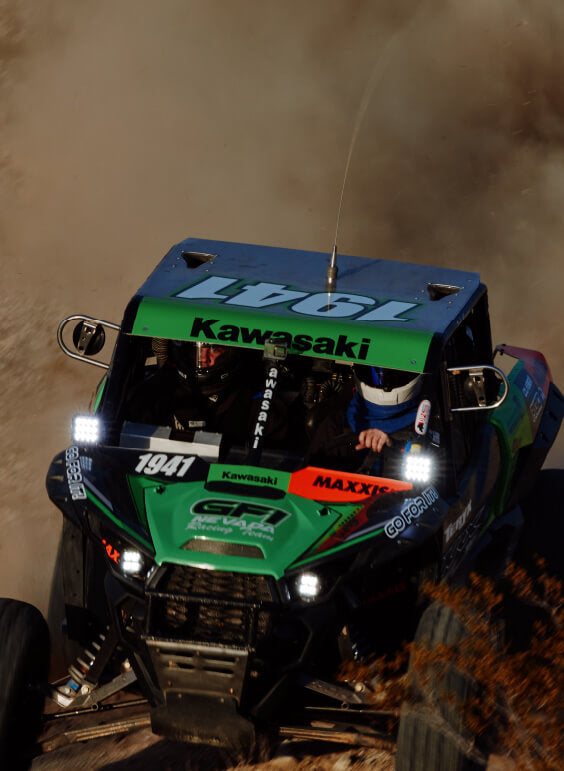Whether you’re ripping across dunes, crawling over boulders, or hammering through forest trails, CVT tuning is the key to unlocking your machine’s full potential. At the center of this performance is your CVT (continuously variable transmission) clutch system.
In this CVT clutch tuning guide, the experts at KWI Clutching walk you through everything you need to know about optimizing your UTV’s clutch setup. From understanding how your CVT system works to making smart adjustments for terrain, altitude, and mods, this is your complete playbook for smarter, faster, and more reliable riding.
What Is Clutch Calibration?
Clutch calibration is the art (and science) of setting up your CVT clutch system to match your UTV’s current power output, tire size, elevation, terrain, and riding style.
This tuning process ensures that your machine stays in the optimal RPM range, aka the power band, where your motor delivers the most horsepower. Get it wrong, and you’ll waste power, burn belts, and lose performance. Get it right, and you’ll experience faster acceleration, better throttle response, and improved reliability.
How a CVT Clutch System Works
Your CVT clutch system includes three key parts:
-
Primary Clutch—Connected to the crankshaft, it controls how engine power is transferred to the belt.
-
Secondary Clutch – Transfers that power from the belt to your transmission and ultimately to the wheels.
-
Drive Belt—Links the two clutches and varies the gear ratio as speed and load change.
As your RPM increases, the primary clutch pushes the belt out, and the secondary clutch lets the belt ride lower. This seamless transition in ratio is what gives a CVT its smooth operation, but only when it’s properly calibrated.
Why CVT Tuning Matters
Here’s why UTV tuning should be at the top of your mod list:
-
Boosted acceleration—Get the power to the ground faster.
-
Better belt life—Avoid slippage and excess heat.
-
Optimized RPMs—Stay in the sweet spot for horsepower.
-
Increased control—Your machine becomes more predictable.
-
More durability—Reduce strain on expensive clutch components.
In short, it’s the one off-road UTV mod that makes every other mod perform better.
How RPM Affects Performance
Peak engine performance occurs in a specific RPM window, usually somewhere around 7700–8000 RPM, depending on your vehicle and tune.
-
Too high? You’re over-revving and losing torque.
-
Too low? You’re bogging and not getting enough out of your tune.
Your goal is to stay in that sweet spot, especially during full-throttle pulls. Use a data logger or tach to check RPMs during WOT (wide open throttle) pulls and adjust accordingly.
Adjusting Clutch Weights
Your CVT tuning guide begins with the weights in your primary clutch. These weights determine how quickly the clutch engages and what RPM it holds at full throttle.
-
Add weight = lower RPM
-
Remove weight = raise RPM
But where you add that weight matters:
-
Tip weight affects high-speed RPM and backshift. Too much tip weight = over-rev dip.
-
Heel weight affects low/mid acceleration. Too much heel weight = sluggish takeoff.
Example:
If you spike to 8400 RPM and then dip to 7600, your tips are too heavy. Shift some weight back to the heel.
If you start slow at 7200 RPM and climb up to 8400, your heels are too heavy. Move that weight forward.
Adjusting the Secondary Spring and Helix
The secondary clutch plays a huge role in belt grip and RPM consistency.
Most setups use a torsion spring (compression and twist). The amount of twist changes two things:
-
Backshift speed
-
Top-end RPM
At KWI, our Groovix Helix system allows precise tuning:
-
More twist = Higher RPM + faster backshift
-
Less twist = Lower RPM + slower backshift
We recommend starting with Hole #2 on the Groovix for about 30° of twist. Only go beyond Hole #3 for aggressive setups, and never go past 120° or you’ll risk spring damage.
Environmental Factors in CVT Tuning
UTV performance tuning isn’t just about the parts; it’s about where and how you ride. Your tune should factor in:
-
Altitude: At high elevations, the air is thinner, and horsepower drops. Subtract 15% from your tuning target.
-
Sand Dunes: Sand has more resistance than hardpack. Subtract 8% to account for the extra load.
-
Oversized Tires: More rolling mass = more resistance. Subtract 8% here too.
-
Smaller Tires: Less weight = more power to the ground. Add 8% to your target power.
These numbers come straight from our calibration charts at KWI Clutching. Use them as a baseline.
Tools You’ll Need for CVT Tuning
Before you dive in, gather the right tools:
-
Clutch puller
-
Tuning weights (adjustable)
-
Groovix Helix or similar secondary tuning setup
-
Spring compressor
-
Tachometer or data logger
-
Torque wrench
-
Flat surface and basic hand tools
Optional but helpful:
-
Scotch-Brite for cleaning sheaves
-
Calibration chart (from your clutch kit or tuner)
Troubleshooting Calibration Problems
If something feels off, here’s what to check:
-
RPMs jump or drop? Tip weight might be too heavy. Adjust toward the heel.
-
Are belts slipping or overheating? Check belt wear and sheave condition. Also, check the spring twist and alignment.
-
Clutch sticking? Worn rollers, grooved sheaves, or bad stop sleeves may be the culprit.
-
Poor low-end? Don’t touch the secondary; adjust the primary heel weight instead.
Remember, some adjustments can be made with the clutch still on the machine. Just make sure you’ve got the proper tools and follow your kit’s install guide.
More Helpful Reading: Read our latest blog on how to resolve the PDrive clutch sticking issue.
KWI’s Approach to CVT Tuning
At KWI Clutching, we’ve developed a complete line of products for CVT systems, from our AO Series Clutch Kits to our Float Mods, Ultrashift Billet Clutches, and Groovix Helix.
Here’s why riders trust us:
-
Battle-tested in real-world racing
-
Engineered for power, reliability, and durability
-
Made in the USA
-
Full support and calibration charts are available
We don’t just sell parts. We provide solutions that make your machine GO FAST and STAY FAST.
Final Thoughts on UTV Tuning
Whether you’re just getting started or looking to dial in your tune for racing, CVT tuning is one of the smartest moves you can make.
Want a better response? More usable power? Fewer belts blown mid-ride? Dial in your clutch.
Let’s Go Fast.
Ready to tune like a pro?
Check out our full CVT tuning, calibration guides, videos, and charts at kwiclutching.com.
Still have questions? Reach out to the KWI team. We’re here to help you get the most out of your build.


Share:
Essential UTV Parts for Optimal Mud Riding Performance
Can-Am X3 Upgrades That Deliver Serious Performance Gains